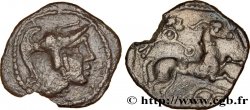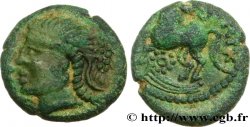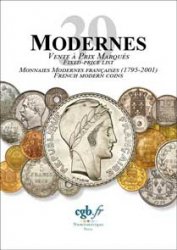E-auction 114-61113 - bgr_358392 - THRACE - BYZANTION Hemidrachme
You must signin and be an approved bidder to bid, LOGIN TO BID. Accounts are subject to approval and the approval process takes place within 48 hours. Do not wait until the day a sale closes to register. Clicking on « bid » constitutes acceptance of the terms of use of cgb.fr private e-auctions.
Bids must be placed in whole Euro amounts only. The sale will start closing at the time stated on the item description; any bids received at the site after the closing time will not be executed. Transmission times may vary and bids could be rejected if you wait until the last second. For further information ckeck the E-auctions F.A.Q.
NO BUYER'S FEE.
NO BUYER'S FEE.
| Estimate : | 195 € |
| Price : | 57 € |
| Maximum bid : | 69 € |
| End of the sale : | 22 June 2015 15:00:00 |
| bidders : | 8 bidders |
Type : Hemidrachme
Date: c. 340 AC.
Mint name / Town : Byzance, Thrace
Metal : silver
Diameter : 11,5 mm
Orientation dies : 9 h.
Weight : 1,87 g.
Rarity : R1
Coments on the condition:
Exemplaire sur un petit flan bien centré. Usure importante, mais parfaitement lisible et identifiable. Jolie patine de collection ancienne avec des reflets mordorés
Catalogue references :
Obverse
Obverse legend : (BY) ARCHAÏQUE.
Obverse description : Protomé de vache passant à gauche, placée sur un dauphin tourné à gauche ; au-dessous, un monogramme.
Obverse legend : (HR)
Reverse
Reverse legend : ANÉPIGRAPHE.
Reverse description : Trident vertical ornementé dans un cercle linéaire creux.
Commentary
Pour ce type, nous avons l’hémidrachme et le diobole, seuls les poids permettent de les différencier.








 Report a mistake
Report a mistake Print the page
Print the page Share my selection
Share my selection Ask a question
Ask a question Consign / sell
Consign / sell
 Full data
Full data















